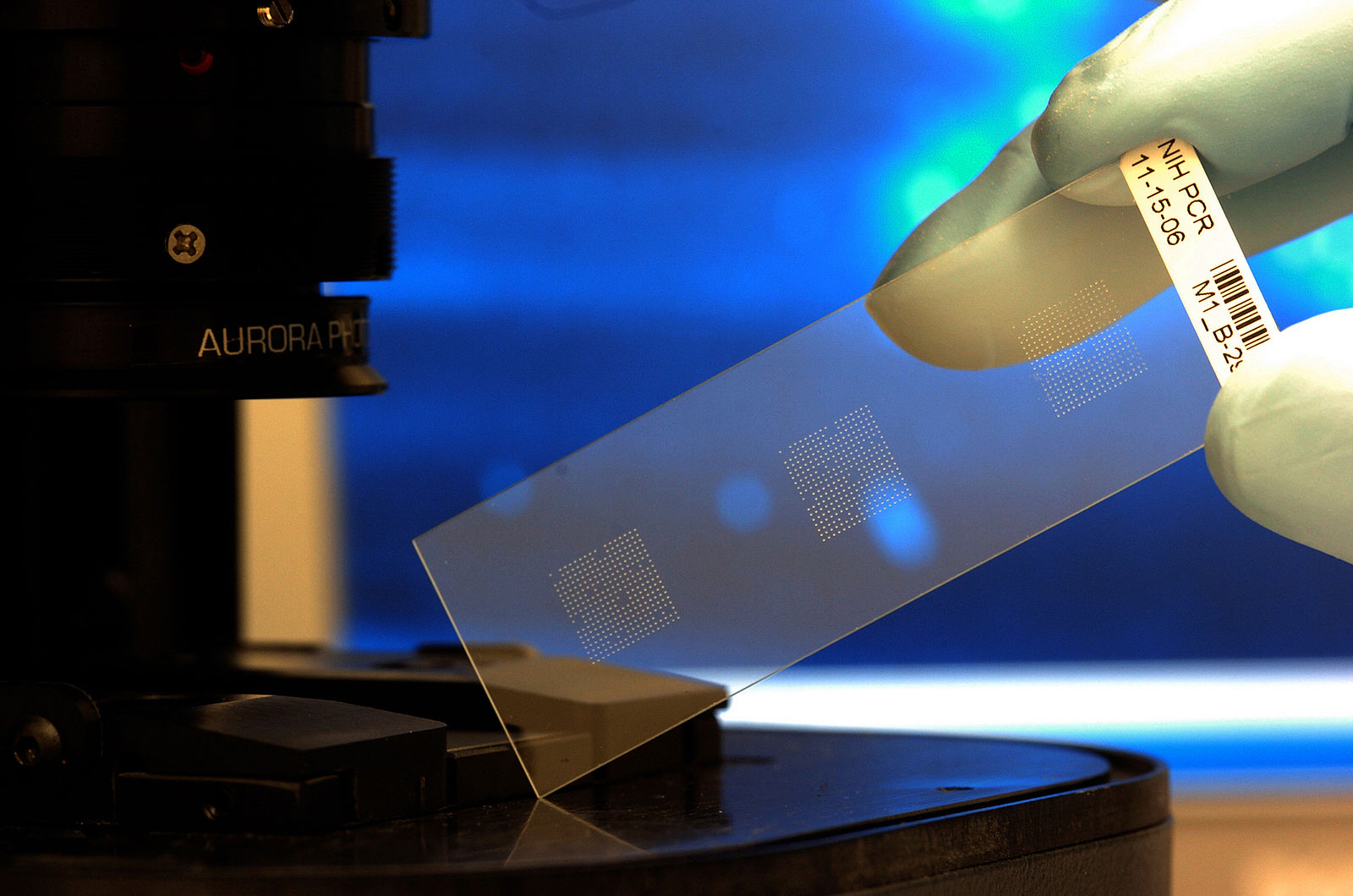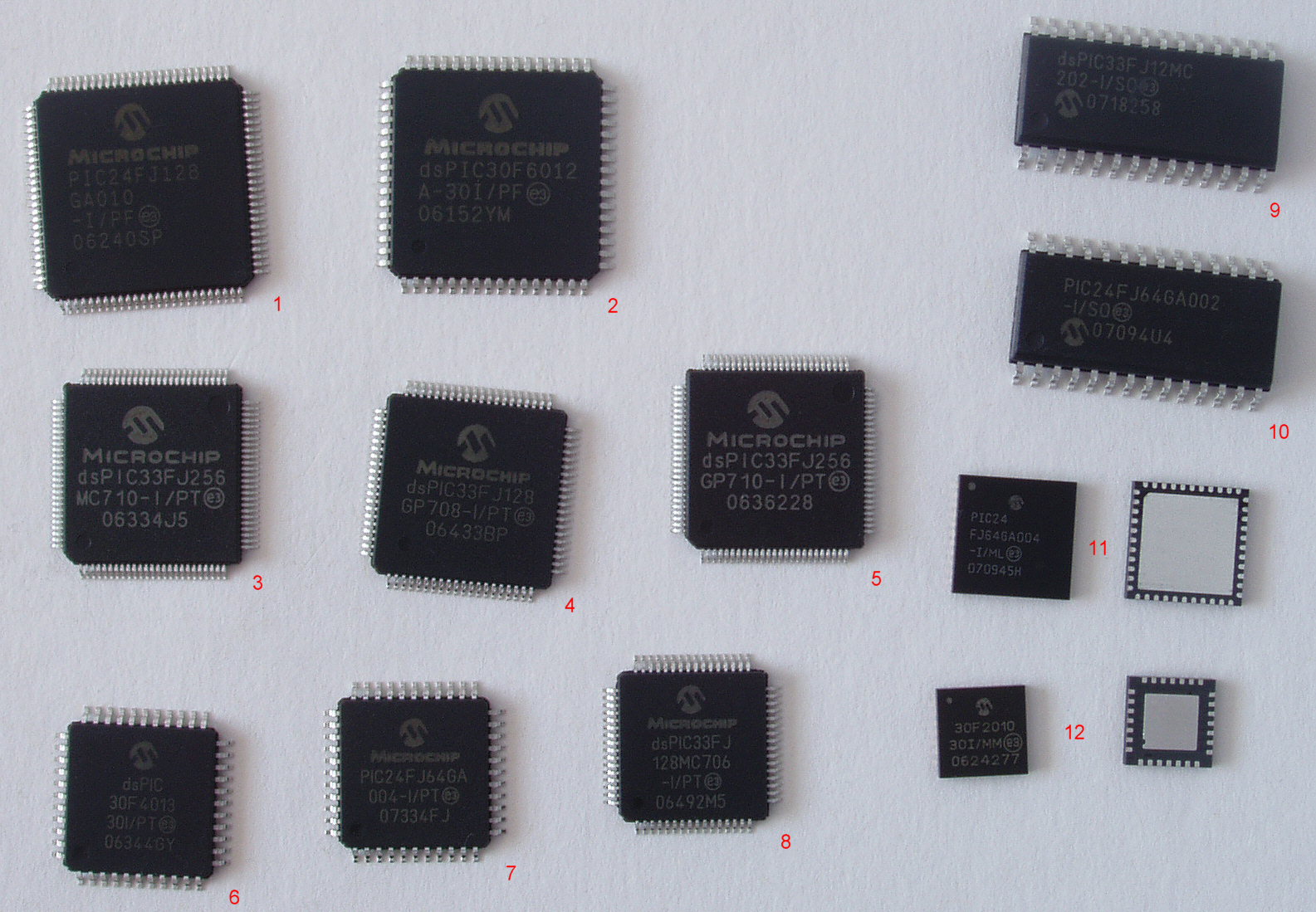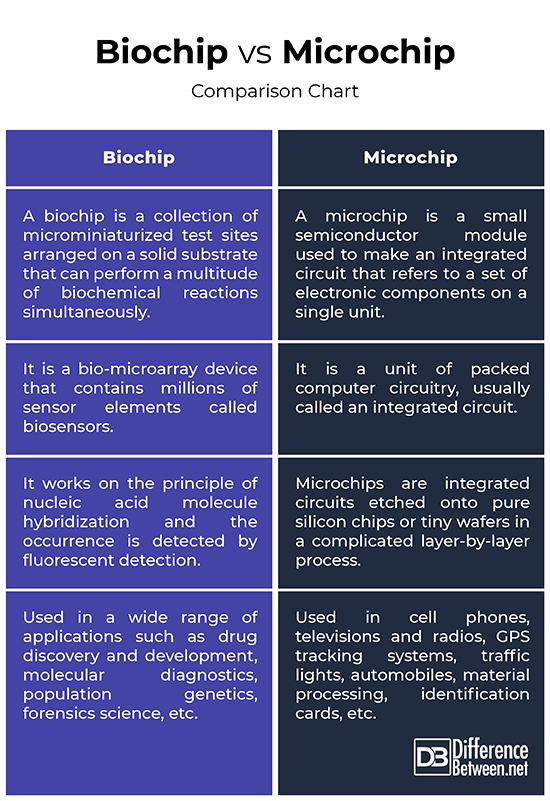Difference Between Biochip and Microchip
Microminiaturization is one of the fastest growing fields in the analytical sciences which enable complex clinical testing to be miniaturized and move to non-laboratory settings. These new microminiaturized analytical devices include biochips, microchips, and gene chips. The scope of applications for these devices spans biomedical sciences and analytical chemistry. They are used to solve diverse analytical problems in medicine and biomedical research, drug discovery, security and defense, and food and processing industries.

What is Biochip?
A biochip is a collection of microminiaturized test sites arranged on a solid substrate that can perform a multitude of biochemical reactions simultaneously. It is a miniaturized laboratory that enables researchers to perform large-scale genomic, proteomic and functional genomic analyses for a variety of purposes. It’s a bio-microarray device that contains millions of sensor elements called biosensors to detect analytes. Biosensors represent a flexible alternative and sophisticated alternative to conventional analytical technologies. The scope of applications for the biochips spans analytical chemistry and biomedical sciences. They are designed to perform biochemical procedures for biomedical applications rapidly and inexpensively. They act as personal laboratories that could be used for a wide range of home testing. One of the significant impacts of biochip technologies is in conjunction with bioinformatics which enables an entirely new approach to biomedical and biological research.

What is Microchip?
A microchip is a small semiconductor module about the size of your fingernail or smaller than that. It is a unit of packed computer circuitry, usually called an integrated circuit, which serves some purpose in relation to other microchips in a computer hardware system. Microchips are an almost invisible part of our modern lives which are everywhere from today’s automobiles to medical scanners, electronic appliances, cell phones, and GPS tracking devices. Today, even pets are implanted with microchips under their skin as a means of identification and tracking. In a computer, each microchip contains tens of millions of transistors that make up a processor. Cell phones contain microchips that allow people to use internet and the video call application. The revolutionary microchip technology was invented by Nobel Prize winner Jack Kilby and Intel founder Robert Noyce. Using the same technology, Jack designed the first hand-held, IC-based electronic calculator called the ‘Pocketronic’.
Difference between Biochip and Microchip
Terminology
–The term ‘biochip’ refers to a bio-microarray device that contains millions of sensor elements called biosensors arranged on a solid substrate designed to function in a biological environment, particularly in living organisms in order to analyze organic molecules. The term biochip was coined in analogy to the phrase computer chips. Therefore, in a more general sense, biochips are based on the concept of integrated circuits. A microchip, on the other hand, is a small semiconductor module used to make an integrated circuit. It is often called simply as a “chip” which refers to a set of electronic components on a single unit.
Working Principle
– Biochips are a collection of diminished microarrays arranged on a solid substrate that enable researchers to perform multiple tests at the same time in order to achieve higher throughput in less time possible. It works on the principle of nucleic acid molecule hybridization and the occurrence is detected by fluorescent detection, after which the results are obtained. Microchips, on the other hand, are integrated circuits etched onto pure silicon chips or tiny wafers in a complicated layer-by-layer process. The integrated circuits transfer electric signals to the receiving device which then converts the signals into instructions.
Function
– Biochips involve both miniaturizations, usually in microarray formats, and the possibility of low-cost mass production. Biochips are essentially miniaturized test sites that enable researchers to perform large-scale genomic, proteomic, and functional genomic analyses for a variety of purposes, from diagnosis of diseases to detection of bioterrorism agents. Microchips are made for programming logic and for computer memory. Microchips are used in cell phones to allow people to use the Internet and the video call function. They are also used to keep track of activities and information and help identify and track missing pets.
Applications
– Biochips play a fundamental role in the field of biological research. Biochip technology can be used in a wide range of applications such as systems biology, disease diagnosis, drug discovery and development, molecular diagnostics, population genetics, forensics science, water quality management, outer space exploitation, etc. Microchips are used in many applications such as cell phones, automobiles, material processing, medical applications, drug delivery systems, laser marking, GPS tracking, televisions, identification cards, radios, traffic lights, cancer discovery and diagnosis, etc.
Biochip vs. Microchip: Comparison Chart

Summary of Biochip vs. Microchip
Unlike microchips, biochips are not electronic devices. A biochip is kind of a micro-reactor that contains millions of sensor elements called biosensors which are designed to detect analytes. Biochips are designed to perform biochemical procedures for biomedical applications rapidly and inexpensively. While biochips and microchips both are micro analytical devices, the scope of microchips is not limited to medicine and biomedical research; in fact, microchips are used in a wide range of applications such as automobiles, television and radio, GPS tracing devices, material processing, electronic appliances, cell phones, and more. The scope of applications for the biochips spans analytical chemistry and biomedical sciences.
- Difference Between Caucus and Primary - June 18, 2024
- Difference Between PPO and POS - May 30, 2024
- Difference Between RFID and NFC - May 28, 2024
Search DifferenceBetween.net :
Leave a Response
References :
[0]Acton, Ashton Q. Advances in Bionanotechnology Research and Application (2013 Edition). Atlanta, Georgia: ScholarlyEditions, 2013. Print
[1]Acton, Ashton Q. Advances in Bionanotechnology Research and Application (2013 Edition). Atlanta, Georgia: ScholarlyEditions, 2013. Print
[2]Rinken, Toonika. Biosensors: Micro and Nanoscale Applications. Rijeka, Croatia: InTech, 2015. Print
[3]Cheng, Jing and Larry J. Kricka. Biochip Technology. Boca Raton, Florida: CRC Press, 2003. Print
[4]Vo-Dinh, Tuan. Biomedical Photonics Handbook. Boca Raton, Florida: CRC Press, 2003. Print
[5]Image credit: https://commons.wikimedia.org/wiki/File:Microchip_16_Bit_77.jpg
[6]Image credit: https://commons.wikimedia.org/wiki/File:Biochip.jpg
